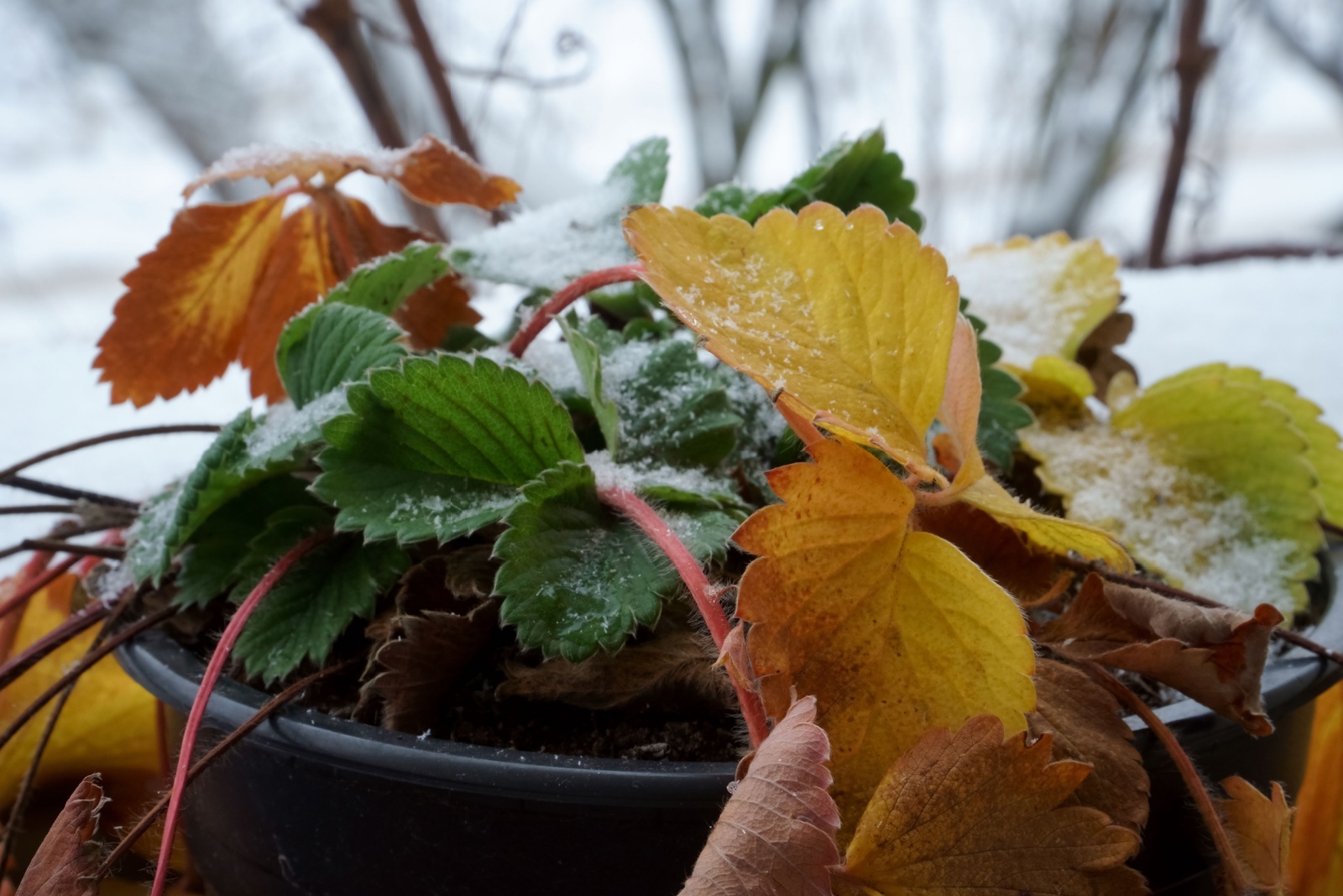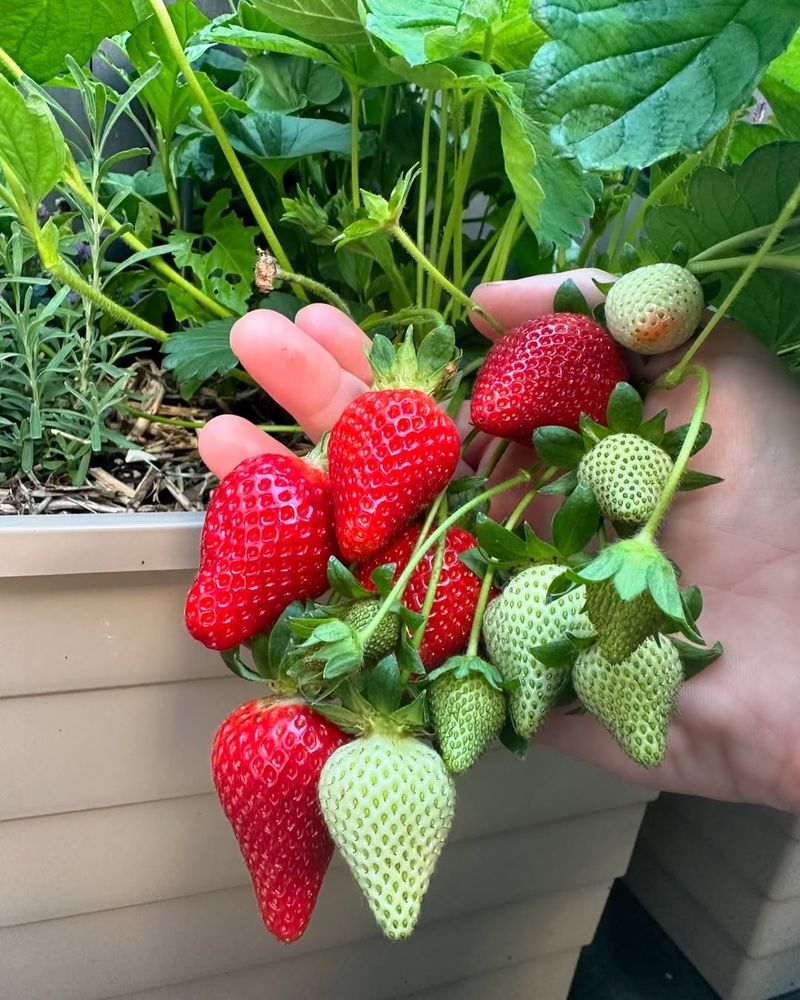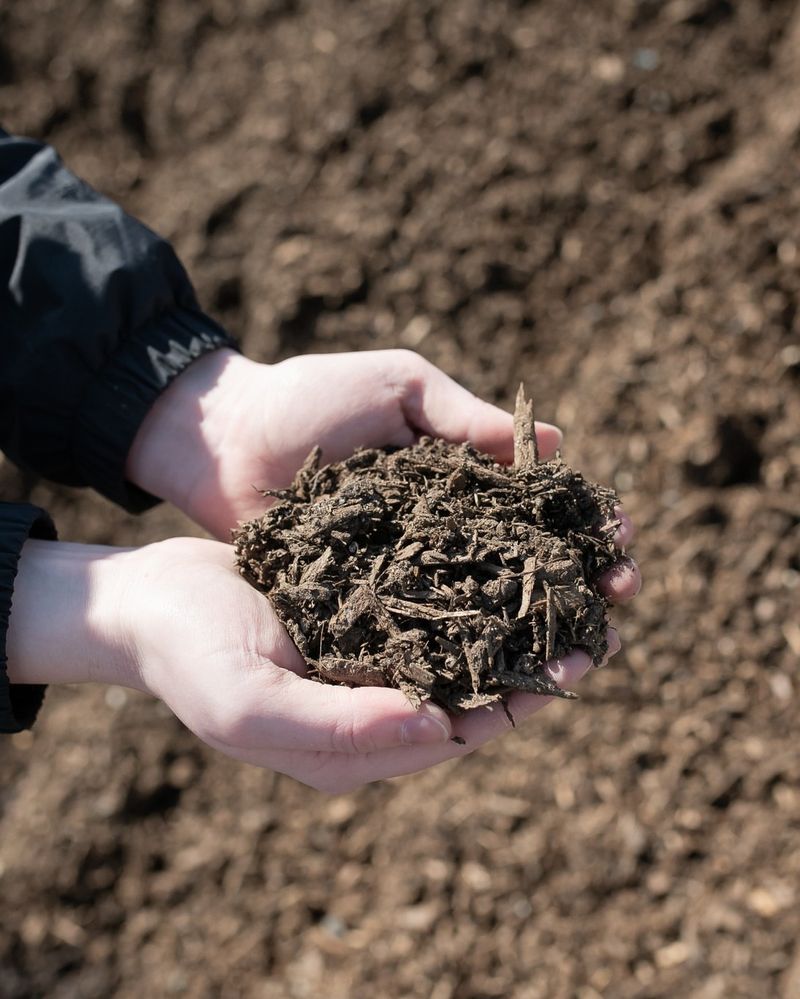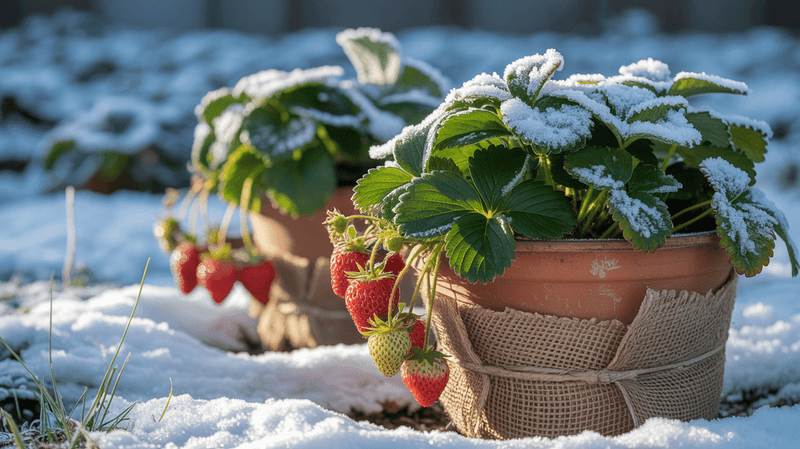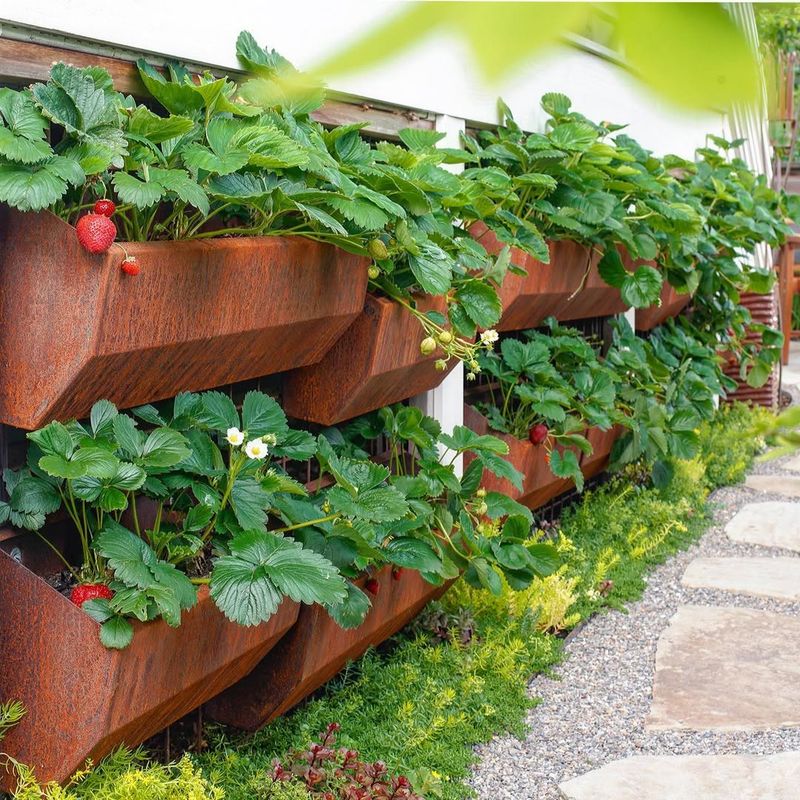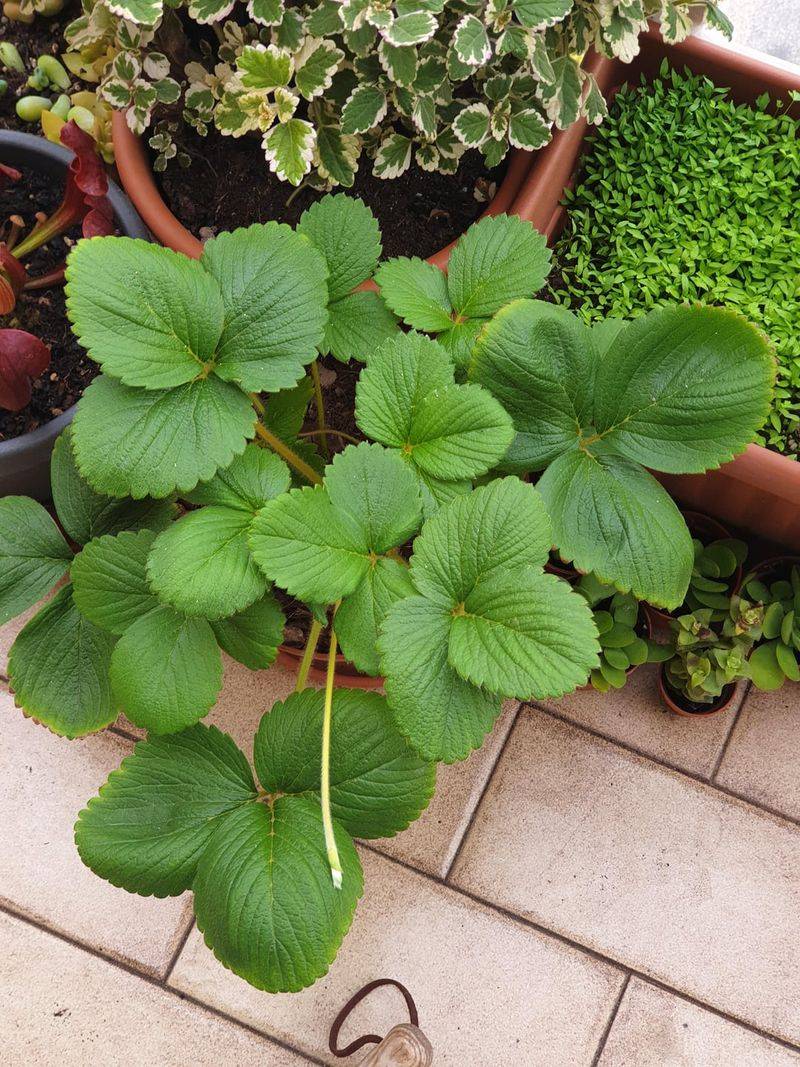Once temperatures start dropping in Wisconsin, it’s time to think about how your container strawberries will handle the cold. Unlike strawberries planted in the ground, potted plants don’t have the natural insulation of soil.
Without a little preparation, their roots can freeze solid. Luckily, there are simple steps you can take to help them overwinter successfully — and return with healthy growth next season.
1. Move Your Pots To A Sheltered Location
Finding the right spot makes all the difference when protecting strawberries from Wisconsin’s harsh winds and extreme cold. An unheated garage, shed, or covered porch works perfectly because these areas shield plants from direct exposure while keeping temperatures slightly warmer than outside.
Avoid placing pots in heated spaces, as strawberries need cold dormancy to thrive next season. Choose a location where temperatures stay between 20-40 degrees Fahrenheit throughout winter for best results.
2. Water Thoroughly Before The First Hard Freeze
Giving your strawberry plants a deep watering before temperatures drop below freezing helps them store moisture for winter survival. Dry soil freezes faster and causes more root damage than moist soil, which acts like insulation around delicate roots.
Plan to water generously about a week before the first predicted hard freeze in your area. Check soil moisture by sticking your finger two inches deep—it should feel damp but not soaking wet or muddy.
3. Add A Thick Layer Of Mulch On Top
Piling mulch over the soil surface creates a protective blanket that keeps roots safe from temperature swings and frost damage. Straw, shredded leaves, or pine needles work wonderfully and are easy to find in Wisconsin during fall.
Apply about four to six inches of mulch, making sure to cover the entire soil surface without burying the crown of the plant. This simple step prevents the soil from freezing solid and protects against winter dehydration.
4. Wrap Pots With Insulating Materials
Container walls offer little protection against freezing temperatures, so wrapping them with insulation prevents roots from experiencing deadly cold snaps. Bubble wrap, burlap, or old blankets secured with twine create effective barriers against Wisconsin’s icy weather.
Focus on covering the sides and bottom of each pot, leaving the top exposed for air circulation. Multiple layers work better than one thick layer, trapping air pockets that act as natural insulators throughout the coldest months.
5. Group Pots Together for Extra Warmth
Clustering your strawberry containers creates a microclimate where plants share warmth and protect each other from harsh winds. When pots sit close together, they lose heat more slowly than isolated containers sitting alone.
Arrange them in a tight circle or row against a south-facing wall if possible, as this spot receives maximum sunlight during short winter days. Surrounding the grouped pots with bales of straw adds even more protection and warmth during extreme cold spells.
6. Monitor Moisture Levels Throughout Winter
Even dormant strawberry plants need occasional watering during Wisconsin winters, especially during dry spells without snow cover. Roots can die from dehydration just as easily as they can from freezing temperatures.
Check your pots once every three to four weeks on days when temperatures rise above freezing. Water lightly if the soil feels completely dry several inches down, but avoid overwatering since wet soil can freeze and damage roots overnight when temperatures drop again.
7. Remove Protection Gradually In Early Spring
When spring arrives in Wisconsin, resist the urge to unwrap and uncover your strawberries too quickly. Sudden exposure to warm days followed by freezing nights can shock plants and damage new growth.
Start removing insulation and mulch in stages once daytime temperatures consistently stay above freezing. Pull back layers slowly over two to three weeks, allowing plants to adjust naturally to changing conditions and preventing sunburn on tender leaves emerging from dormancy.

